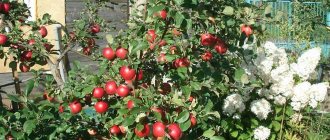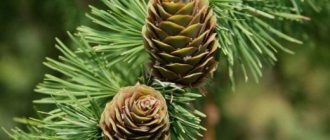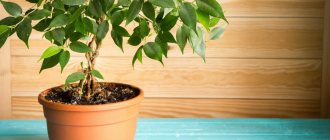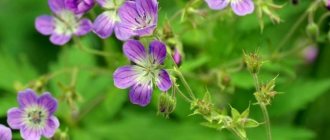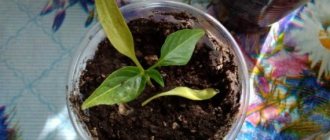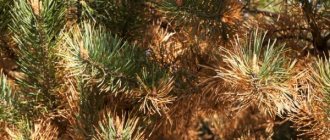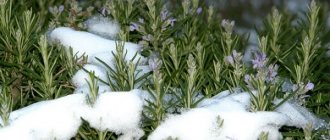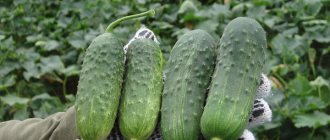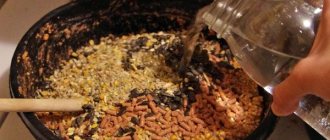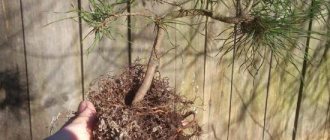If you have thujas, junipers, spruces, and pines growing on your property, you have probably noticed that old dry needles gradually accumulate on their branches. In theory, it, like leaves, should fall off on its own, but, alas, this does not always happen.
To prevent dead needles from clogging the crown, in the spring we recommend sanitary cleaning of coniferous plants and removing dry needles and damaged branches. How to do this correctly - we tell you in the article.
Spring is a good time to inspect and tidy up your conifers
Follow us:
Why do you need to remove old needles?
If you do not clean conifers regularly, over time their crown will be clogged with needles that were shed 2–4 years ago, which will negatively affect not only the appearance, but also the health of the plants.
- Browned needles look unaesthetic, and the tree has a sickly, unkempt appearance.
- A clogged crown is less ventilated and sunlight does not reach it, causing the plant to grow and develop more slowly.
- Dead needles gradually rot and become a breeding ground for fungal diseases.
- It is also a cozy refuge for all kinds of pests, for example, thuja beetles, pine mites, which become more active with the onset of heat and the beginning of the plant’s growing season.
If coniferous plants are not cleaned, they remain green on the outside, but on the inside they look something like this
Deciduous plants and the change of seasons
Plants with broad leaves remain green in the summer and shed their leaves completely in the winter. They will still be useless in the frosty period, since they are not resistant to cold and will wither at the first frost. Therefore, it is easier to get rid of them by falling into a kind of hibernation during the cold season in order to grow fresh greenery in the spring.
Chlorophyll formula
All young leaves have a green color, which is provided by chlorophyll. Due to this substance, photosynthesis occurs - a process that provides plants with nutrition. It occurs in the presence of sunlight, and its “side” effect is the release of oxygen into the atmosphere. At night, when plants are unable to carry out photosynthesis due to darkness, they breathe like ordinary earthly creatures, inhaling oxygen and releasing carbon dioxide. Only the presence of good lighting allows them to act differently.
Interesting: Why don't city pigeons sit on trees? Reasons, photos and videos
Destruction of chlorophyll in the leaf during shortening of daylight hours
In hot countries, where there are no foliar-damaging frosts and there is sufficient sunlight all year round, local plants remain evergreen. Among conifers, only cypress and some pines, mainly mountain ones, are considered southern. For the most part, conifers are typical northern plants. In harsh latitudes, summer is short and there is less sun. It is more profitable for deciduous trees to get rid of foliage every year in order to survive the winter - it also removes excess moisture, which could create a threat of cracking of the trunk in the cold. Chlorophyll disappears from the leaves, they acquire bright colors, then fall off. But conifers do not need to hibernate.
Frequency and timing of sanitary cleaning
Coniferous trees are cleaned 1-2 times a season. For most of them, spring cleaning is sufficient, but some breeds recommend cleaning in the fall in preparation for winter.
In the spring, work begins as soon as the temperature reaches above zero.
But you can clean the plant at the same time as sanitary pruning, especially if it has suffered from snowbreaker or sunburn. In this case, the timing is shifted to late spring, when the surviving buds on the shoots awaken and it will be clear which branches have died irrevocably and which will soon grow back.
Why is it better to remove dead needles in the spring? Most coniferous trees shed old and diseased needles at the end of September - October, and you may simply not have time to clean them before frost. In addition, dry needles serve as additional insulation and will help the trees overwinter more successfully.
Such a baby will never drop the needles on his own - he definitely needs help
Answer
Coniferous trees (especially pine and spruce) tolerate drought well. In addition, needles evaporate very little water than the foliage of deciduous trees. Therefore, coniferous trees can remain green all year round. The amount of moisture that conifers evaporate is ten times less than that of deciduous trees. But larch behaves like a deciduous tree and evaporates moisture 5 times more than spruce and 10 times more than pine. The ability of coniferous trees to save moisture is achieved through needles. Needles have many devices to retain moisture: thick skin, waxy coating. The leaves of deciduous trees lack drought-resistant adaptations.
In addition to the fact that deciduous trees are saved from drought due to leaf fall, in winter it saves them from falling over. In winter, even bare branches of trees break under the weight of snow. What would happen if snow settled on the broad leaves of deciduous trees?
When leaves fall, deciduous trees get rid of excess mineral salts, which become harmful to trees and shrubs. As the foliage of a tree ages, the ash content increases. Mineral accumulation in deciduous trees occurs because the tree's leaves evaporate a lot of water. It is replaced by new moisture, which contains minerals. Some of them go to feed the deciduous tree, the rest remains in the leaves. Leaf fall for a deciduous tree is a normal condition for normal growth and development of the plant. Coniferous trees do not need to shed their needles in this way, since pines, spruces and other conifers evaporate very little moisture. Larch evaporates moisture to the level of deciduous trees, so in a humid climate, soft needles are shed.
Do spruce and pine trees shed their needles? Of course they do. After all, in a coniferous forest you can see a lot of fallen needles. But no one saw bare pines and spruces. Pine trees retain their needles for 2-3 years, while spruce needles last for 5-7 years. And when they fall, that’s a mystery. If you look at a young spruce branch that grew in the spring, you can see that the needles on it are light green and very soft. The needles do not fall off all at once, but gradually. But still it would be noticeable on the branches. But we don't notice. Because the old needles are replaced by young ones in the spring.
Read also: How to cook pasta nests in the oven
If you look at all the other trees in winter or autumn, they will either shed their leaves or stand already bare. Coniferous trees refuse to shed their needles, delighting us all year round. But why do conifers stay green all year round?
Coniferous trees have their own characteristics that allow them to cope with problems that others cannot. For photosynthesis, a tree needs light and water, and this is where certain difficulties arise, so ordinary trees shed their leaves and begin their work with a new leaf in the spring.
Coniferous trees spend energy accumulated in advance to retain moisture, this allows the leaves (needles) to be fed with water. The needles of conifers are much smaller in area than the leaves of trees, so conifers do not get rid of their leaves, but try to feed them by spending their reserves.
The accumulated solar energy and moisture is enough for conifers to survive until spring, when solar energy again begins to flow in normal volumes. However, conifers do not live with the same needles all the time; they constantly renew them. The needle renewal cycle lasts several years; thanks to the gradual renewal of needles, trees are able to accumulate energy for the winter.
If ordinary trees tried to feed their leaves without shedding them, they would die due to lack of energy. The leaves are too large to be left.
Cleaning thuja
Arborvitae can be freed from yellowed needles several times a season, but the main sanitary cleaning is carried out in the spring.
For work you will need gloves and hand pruners. First, carefully moving the branches apart, remove with your hands everything that crumbles freely. Then use pruning shears to remove dried and broken branches.
Timely removal of old needles from thuja is a good prevention of fungal infections
It is not necessary to remove every scale from the tree. Finally, you can use a blower to blow through the crown and shake off any stuck needles.
The older the thuja, the larger its “dead zone” inside the crown - in this part there is no supply of buds from which new growth can appear. Such plants need to be cleaned and pruned very carefully so as not to completely remove the living part of the branch and not deprive it of the opportunity to grow back.
Video about the restoration of thuja occidentalis after winter
Diseases of ate and their treatment
All kinds of infections developing on the shoots and trunk of spruce should be given special attention. In some cases, it is this problem that becomes the main cause of wilting and shedding of needles. The developing microorganism feeds on the sap of young shoots, which certainly contributes to the inhibition of biochemical processes and cell division of the affected tissues. The falling of needles becomes the most striking symptom of infection and the slow death of the tree.
Find out what blue spruce diseases are.
Rust
Rust is considered one of the most serious infectious diseases that can be encountered when growing plants. It has no specificity, so it spreads widely and instantly among all kinds of plant organisms. Rust is caused by a whole group of pathogenic fungi from the class Urediniomycetes, which affect both the needles and the bark of coniferous trees. This disease manifests itself as all sorts of spindle-shaped formations on the needle and bark of orange or yellow-orange color.
As the fungus develops, a viscous mucous discharge appears near them. Bordeaux mixture is considered the most effective drug for treating pathology. Instead, the affected plant is sprayed with analogues: “Hom”, “Oksikhom”, “Abiga-Pik” or “Ordan”. If the disease appears in hot weather (more than +22°C), spraying with any complex fungicides based on sulfur compounds can also be effective.
Vertun
This pathology is a consequence of infection with the pathogenic fungus Melampsora pinitorqua. During the development of the microorganism, the tops of the affected shoots become covered with an orange or yellow-orange coating. Over time, diseased shoots bend, and their tops dry out and die, which leads to the shedding of needles. The infection is most common among young plants ; trees over 10 years old are practically not susceptible to infection.
We advise you to learn how to grow spruce from cone seeds.
It is not easy to overcome this disease. Fungal spores have increased survival rate, so they can persist in fallen needles for several years. The best way to cope with the disease is to use a 1% solution of Bordeaux mixture. As an alternative, you can use the drug "Polycarbacin" (1% solution).
Necrosis
Necrosis refers to putrefactive lesions of shoots caused by a variety of pathogenic fungi. This disease is not species specific to spruce trees, so it can instantly spread to other species. The first signs of infection are a change in the shade of the bark and needles to a reddish color . Over time, the shoots become covered with small brown-black tubercles, but the shoots may not dry out and die immediately; dried fallen material appears after massive damage to the plant.
Did you know? Spruce is considered one of the oldest plants that has survived to this day. According to archaeological artifacts, these trees grew on the planet back in the Oligocene era (33–23 million years ago).
There are no specific procedures for saving Christmas trees from this disease; it is enough to remove the affected shoots and then dispose of them. Upon reaching the age of 15 years, the tree forms a strong immunity to fungal necrosis.
Cancer
This term implies a whole complex of all kinds of infectious invasions, but quite often spruce is affected by the so-called shoot cancer. This is a severe pathology caused by a specific fungus Ascocalyx abietina (Lagern.) Schlaepfer-Bernhard. During parasitism of the microorganism, a slight redness occurs at the base of the affected needles. Over time, the infection causes the needles to bend, forming a kind of “umbrella”, and gradually fall off.
You will be interested to know what to do if the tree begins to turn yellow.
This disease cannot be treated, since today there are no specific drugs that can eradicate the pathogen. It is possible to stop the development of pathology with the help of complex fungicides, but such a tree will still dry out slowly and eventually die, so it is recommended to uproot the cancer-affected plant and dispose of it along with fallen needles.
Schutte
Schutte is a whole complex of various diseases caused by a wide group of specific fungi. Most often, this disease affects young plants, up to 10 years old; more mature trees develop immunity to it.
There are several forms of this infection:
- real - appears as small yellow dots on spruce needles, over time the spots turn brown, with extensive infection, the affected needles fall off and the plant dies;
- ordinary - external signs are similar to the real shutte, the only difference is the shade of the spots on the affected needles, from yellow they gradually become a bright reddish-brown color;
- snowy - affects plants at sub-zero temperatures; after a significant snow cover has fallen, infected needles become pale green, after a few days they can dry out and fall off.
The causative agents of Schutte are eliminated quite easily; to do this, it is enough to treat the diseased tree with any complex fungicide based on sulfur and copper compounds.
Video: Schutte's disease
Fusarium
Fusarium is considered the most common infection in the plant world. Its causative agent is all kinds of fungi from the genus Fusarium
. The first sign of the disease is a massive change in the color of the needles: from a rich green color they become red. Gradually, the needles begin to fall off, the crown becomes sparse, and the shoots dry out.
Important! Spraying the tree should be carried out at least 2 times, with an interval of 14–20 days. Otherwise, the procedure will be ineffective.
The spruce should be saved as soon as possible after the disease is identified. To do this, you need to use a high-quality antifungal agent. The most effective among them are the following drugs: Agat-25K, Fitosporin-M, Maxim, potassium humate and Fundazol.
Cleaning pine
Pine needles live for about two years and become lemon-yellow before they die. Usually in August or early September, some of the needles inside the crown begin to turn yellow. Don't be alarmed, this is normal.
During autumn and winter, most of the needles will fall off on their own. The rest should be removed in the spring.
Since new growth is formed only at the tip of the shoot, the needles should be removed, but not the branch itself. By removing the growth point from the end of the shoot, you will destroy the branch completely.
This type of pine in the fall is normal.
Landscaping project from Sad-dizain
More details
Prevention
Any problem can be prevented rather than solved later. To prevent pine needles from turning yellow and the plant not to suffer from diseases and pests, follow the rules of prevention:
- correct landing and choice of place;
- protection of needles from sub-zero temperatures and bright scorching sun;
- compliance with agricultural technology rules;
- preventive spraying of plants with special preparations;
- every year you need to feed the crop with mineral complex compounds;
- When symptoms of problems appear, they immediately fight them.
A beautiful evergreen coniferous tree, with proper care, will become a worthy decoration of the site. Growing a crop requires a favorable planting site and minimal care.
Juniper cleaning
Junipers are cleaned in early spring, immediately after the snow melts and before the plant begins to grow. This type of conifer grows well, so it can not only be cleaned, but also trimmed.
Inspect the plant and use pruning shears to cut out any dead branches in the center of the bush. Trim partially dead shoots to living tissue. You can also shorten branches that are too long, but no more than half the length. This will stimulate new growth.
If the juniper is young, it is enough to remove broken and dried shoots in the spring
Sanitary cleaning of conifers is a labor-intensive and time-consuming process. Each tree takes on average 15–20 minutes. And if there are more than a dozen thujas, junipers, spruce trees growing on the site, or there is a hedge of them, it will take more than one day to get the plants in order.
If you do not have free time, you can use the help of specialists. provides professional care for ornamental gardens, which includes all types of landscaping work on the site, including sanitary cleaning and pruning of coniferous plants.
Why don't coniferous trees shed their needles?
But then you should have a legitimate question: why don’t pine and spruce trees shed their needles in the fall?
The thing is that needles are modified leaves, but very small in size. Because of this, they evaporate moisture many times less than ordinary leaves. The coniferous tree has enough food even in winter. Therefore, such plants are called evergreens. It takes about 4-5 years for all the old needles to be replaced. That's why they say about the Christmas tree: in winter and summer, the same color.
Read also: Claudio pepper variety description photo reviews
Who is who
Common pine needle blight (see link) - caused by the fungus Lophodermium pinastri . The affected needles acquire a red-brown color, later lightening and becoming yellowish-brown. First, fungal spores form in the form of numerous small black streaks on dead needles. Later, fruiting bodies are formed on it in the form of clearly visible oval black flat or convex formations up to 2 mm long, separated from each other by black thin transverse lines.
The disease causes partial loss of needles, but does not cause significant harm.
Affects different types of pine.
Common Schutte pine
_________________________________________________________________
Spheropsis (diplodia) necrosis of pine (see link) - caused by the fungus Sphaeropsis sapinea (syn. Diplodia pinea) . Affected shoots become covered with resin and become brittle. The needles on them are shortened, initially yellow, later brown. On dried shoots and needles, fungal spores form, looking like numerous small black tubercles. The disease causes the death of buds, shoots, needles, and cones.
Affects different types of pine trees.
Bunch of affected needles
_______________________________________________________________
Resin cancer (silvergrass) of pine (see link) - is caused by the fungi Cronartium flaccidum and Peridermium pini . Perennial wounds up to 2.5 cm long form on the trunks. The bark on the wounds peels off and falls off, and their surface is covered with gray-yellow resinous nodules and streaks that turn black. The disease leads to the gradual weakening of trees.
Scots pine is most often affected, and black and mountain pine are less commonly affected.
Wound on a pine trunk caused by tar cancer
_________________________________________________________________
Blister rust (rust cancer) of pine (see link) - is caused by the fungus Cronartium ribicola. Thickenings form on the trunks and branches, which gradually grow and turn into tarred cancerous wounds. In spring, fungal sporulation appears in these places, looking like yellow-orange bubbles up to 10 mm long and 12 mm high. Repeated damage leads to gradual drying out of the crown, weakening and death of trees.
Weymouth pine, Siberian pine (= Siberian cedar), Korean pine (= Korean cedar), as well as red, black, alpine, golden and gooseberries are susceptible to the disease. The latter are sources of infection for pine.
Weymouth pine trunk affected by blister rust
______________________________________________________________
Common spruce needle blight (see link) is caused by the fungus Lirula macrospora. In summer, the affected needles acquire a brown or red-brown color. On the underside of the needles, the fruiting bodies of the fungus are formed in the form of black convex, oval-elongated formations up to half the length of the needles or more. Due to the disease, the needles fall off (by autumn) and the decorative effect decreases.
Norway spruce (common spruce), Siberian spruce, and prickly spruce are affected.
Common Schutte spruce
________________________________________________________________
Lowland spruce needle schutte (see link) - (caused by the fungus Lophodermium piceae) . In summer, the affected needles become reddish-brown in color. By autumn, fruiting bodies of the fungus appear on both sides of it, looking like black round-oval, convex formations up to 11.5 mm long, separated from each other by thin black transverse lines. The lower part of the crown of trees weakened by various unfavorable factors is affected. The damage is minor.
Norway spruce, Siberian spruce, Canadian spruce, and Engelmann spruce are susceptible to the disease.
Lowland schutte spruce needles
________________________________________________________________
Bud death (megaloseptoria) of spruce is caused by the fungus Megaloseptoria mirabilis. More often, the disease affects the buds of the shoots in the lower part of the crown. Last year's affected buds are completely covered with a dense layer of dark brown, almost black fungal spores and take on the characteristic appearance of black cones.
The disease leads to the death of the buds and thinning of the crown.
Affects prickly spruce, European spruce, and Engelmann spruce.
Spruce bud megaloseptoria
__________________________________________________________________
Juniper needle schütte (see link) – caused by the fungus Lophodermium juniperinum. In summer, the affected needles become brown or yellow-brown in color. On its upper side, the fruiting bodies of the fungus are formed in the form of black convex oval formations up to 2 mm long. The disease can cause massive drying out of needles.
Common juniper, Virginian juniper, and Cossack juniper are affected.
Schutte juniper needles
________________________________________________________________
Blister rust of juniper trunks is caused by the fungus Gymnosporangium clavariiforme. Thickenings appear on the stems and branches, which later turn into wounds. In the affected areas, sporulation of the fungus forms in the form of large yellow or brownish-brown gelatinous outgrowths protruding from cracks in the bark. The disease leads to the death of branches, weakening of plants, and a decrease in decorativeness.
Blistering rust of juniper trunks
__________________________________________________________________
Necrosis of thuja and juniper shoots is caused by the fungus Kabatina juniperi. Young shoots and needles turn yellow or become red-brown. Later, fungal spores form on them in the form of numerous scattered or crowded black small tubercles.
Various types of thujas and junipers are susceptible to the disease.
Necrosis of juniper shoots and needles
_________________________________________________________________
The death of shoots of thuja and juniper needles is caused by the fungus Pestalotiopsis funerea . Young shoots and needles are affected, which acquire a brown or yellowish-brown color. In summer, small black dotted tubercles form on them, from which dark brown, almost black, thin strands, drops or tendrils of pathogen spores emerge. The disease leads to partial drying of the crown and loss of decorativeness of trees.
Various types of thujas and junipers are affected.
Dying of shoots of thuja needles
_________________________________________________________________
In order to prevent fungal diseases of conifers, it is necessary:
- use healthy planting material;
- create optimal conditions for plant growth, taking into account the characteristics of a particular breed;
- carry out pruning of diseased and withered branches and shoots and their subsequent destruction;
- competently and systematically care for the tree.
Chemical treatment of trees is carried out only on the recommendation of a specialist with strict adherence to the regulations for the use of drugs.
__________________________________________________________________
Pests and diseases of ate
False caterpillar of the common spruce sawfly
Pests inhabit all organs of the tree: buds, shoots, needles, branches, trunks, roots and seeds (cones). At the same time, spruce is susceptible to many infectious diseases, but among them the most common and dangerous are fungal diseases that affect needles, trunks, branches and roots.
Is the only coniferous tree that sheds its needles for the winter, others are deciduous?
Despite the fact that larch is considered the most famous and widespread tree that sheds its needles for the winter, there are several other types of deciduous conifers.
Metasequoia
The first is Metasequoia, which is a coniferous plant and belongs to the cypress family.
Features of this plant include:
- The bulk of representatives are distributed in the Hubei province area;
- The average tree height is 35-40 m, cut diameter is 2 m;
- The branches are located oppositely, forming a wide-conical crown;
- Can reach an age of more than 600 years;
- Distributed on mountain slopes, along river beds and the edges of hollows, where it forms mixed forests;
- It is distinguished by its ease of reproduction and growth rate. Thanks to the latter, it develops quickly, both when propagated by cuttings and seeds;
- It is unpretentious to soil conditions and temperature fluctuations, although it thrives best in humid subtropical countries.
This relict genus contains several species. Matasequoia cones are hanging with shield-like woody scales.
